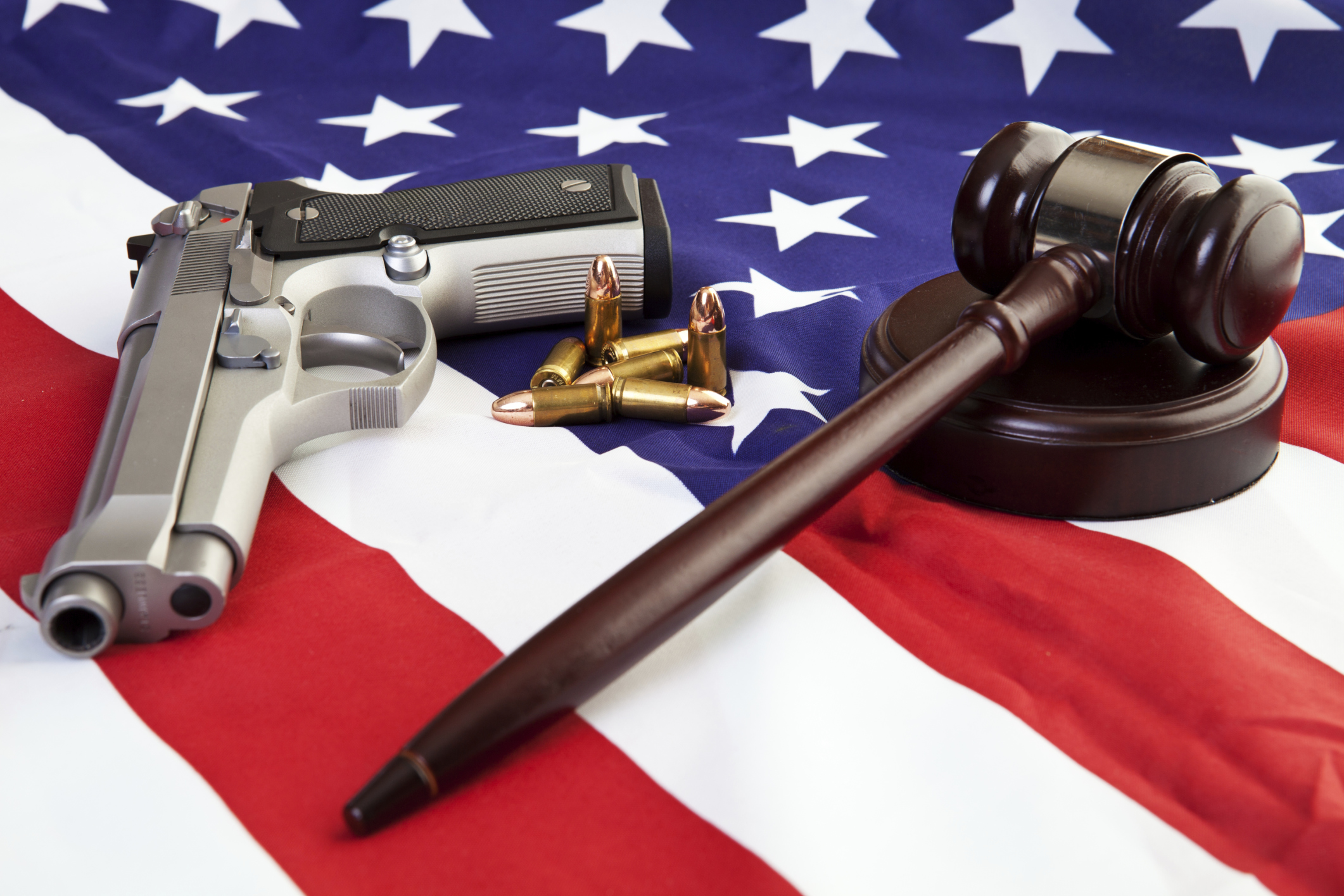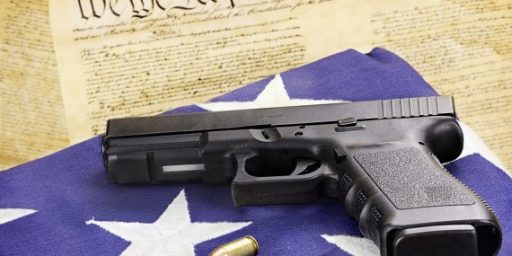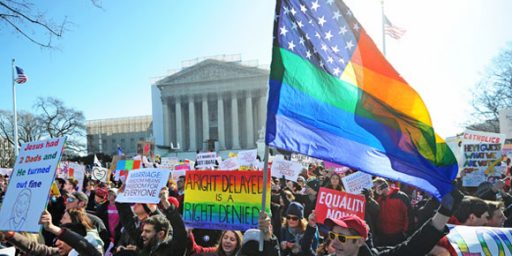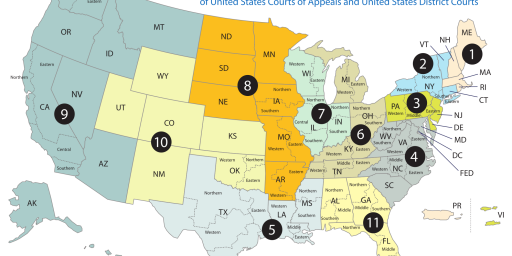Supreme Court Declines To Accept Yet Another Second Amendment Case
The Supreme Court has declined to accept yet another Second Amendment case for review, continuing a streak that goes back some eight years.

Continuing a pattern that began eight years ago, the Supreme Court has once again declined to accept a case raising significant Second Amendment issues for review, leaving court observers to wonder if the Court is ever going to accept a case that requires it to evaluate other gun control laws in the light of its decisions in District of Columbia v. Heller and McDonald v. Chicago:
The U.S. Supreme Court has rejected a challenge by would-be gun dealers and a firearms organization to an Alameda County ordinance that bans new gun stores in unincorporated areas within 500 feet of a residential neighborhood, school or day care center.
The justices left intact a federal appeals court ruling that said the Second Amendment to the Constitution protects only the right to keep and bear arms, not the right to sell them. Lawyers for the county said similar buffer-zone ordinances are in effect in 17 other cities and counties in California, including San Francisco, Oakland and Contra Costa County.
The 1998 Alameda County ordinance was challenged by three businessmen who wanted to open a gun shop in an unincorporated area near San Leandro, 446 feet away from the nearest home on the other side of Interstate 880. Their suit, backed later in legal filings by the National Shooting Sports Federation, contended the county had effectively banned new gun stores in unincorporated areas and therefore violated the rights of prospective gun owners.
A three-judge panel of the Ninth U.S. Circuit Court of Appeals in San Francisco refused to dismiss the suit in 2016 and ruled 2-1 that the county, to justify the restriction, would have to prove it was essential to reducing gun crimes. But a majority of the full appeals court then granted the county’s request for a new hearing before a larger panel, which ruled 9-2 in October that the ordinance was constitutional.
There was no evidence that the local law “impedes any resident of Alameda County who wants to purchase a firearm from doing so,” Judge Marsha Berzon said for the court majority in October. She said the county has 10 gun stores, four of them in unincorporated areas and one of those within 600 feet of the proposed San Leandro location.
The decision was made public on Monday when the Court released its regular report of the disposition of cases considered at the meeting the Justices typically hold every Friday while the Court is in session to both discuss any cases argued during that week and to discuss petitions for appeal that are pending before the Court. Unlike previous Second Amendment cases that have been rejected for review in the recent past, this decision was not accompanied by a dissent from any of the Court’s conservative Justices. While such dissents are not common, it had become quite common over the past four years or so for Justices Alito and Thomas, along with the late Justice Antonin Scalia to release short dissents on the decision to decline review arguing that the Court was dodging significant Second Amendment issues raised in the wake of the decisions in Heller and McDonald. In each of those dissents, the respective Justices argued that the Court should have accepted review for one reason or another, and arguing in obvious frustration that the Court has let rulings upholding these and other state laws stand rather than stepping in and taking up the appeal and that the trend that I’ve noted hear sends the signal to lower Courts that the Supreme Court isn’t going to place a priority on cases arising under the Second Amendment.
The list of Second Amendment cases that the Court has declined to accept for review have covered a wide variety of laws and circumstances Among these are a 2013 decision to decline to accept a case involving New York State’s laws regarding carrying guns in public , a decision in 2014 to decline a similarly restrictive New Jersey law regarding carrying concealed weapons, a 2015 case involving San Francisco’s law regulating handguns, and a 2016 decision regarding laws adopted by New York and Connecticut in the wake of the shooting at Sandy Hook Elementary School. At the end of the last term, At the end of its last term, the Court declined to hear an appeal of the Ninth Circuit Court of Appeals ruling upholding California’s law regarding the concealed carry of weapons. Most recently, in November the Court declined to hear a case challenging Maryland’s ban on so-called “assault weapons. Most recently, the Court declined to review of a Ninth Circuit opinion upholding a California law that imposes a ten-day waiting period on gun purchases.
Unlike most of these previous cases, this case didn’t involve the right to “keep and bear” arms so much as it involved the question of the extent to which that right includes a right to sell those arms in a situation where government regulation effectively makes it nearly impossible to do so, or which forces gun retailers to locate stores in places that may not be easily accessible to the public. The Second Amendment, of course, does not speak to a right to sell weapons, but one can make the argument that this right is more or less subsumed into the broader right the Amendment does protect. Additionally, even conceding the point that localities have at least some right to regulate the location of gun stores via zoning laws and such just as they do with other businesses, the extent to which they are using that power to effectively make it impossible for sellers to operate is arguably a step too far just as it would be unacceptable for a locality to use zoning laws to restrict the ability of places of worship to locate in particular locations. Given that, it would have been helpful to have some guidance on this issue from the nation’s highest court.
As I’ve said in the past, it’s hard to state definitively why the Court does not accept a particular case for review. In some cases, it may be because the Court believes the case was rightly decided by the Court below. In others, it may be because there is some procedural flaw in the case that would make it inappropriate to review the case at all. Generally speaking, though, it is usually the case that the Court is inclined to review cases that raise questions arising under Federal law or under the Constitution, so to some extent that makes the seemingly consistent reluctance to review any of these cases is unusual. At the very least, it appears to show that neither the conservative nor the liberal wings of the Court believe that there is sufficient reason to accept these particular cases. Given the fact that it only takes four Justices to accept a case, it would be easy for either side to vote together to get the case before the Court.
As I’ve noted before, there are several possible explanations:
This fact leads one to wonder just how many Justices have ever been in favor of accepting these cases for review to begin with. It’s possible that other conservatives, such as Justice Alito or, perhaps now, Justice Gorsuch, have been among those who voted that the Court should accept a particular case but they chose not to sign on to the dissents that Scalia and Thomas have filed. Or, it’s possible that for an extended period it was only Scalia and Thomas taking that position and that now, it’s only Justice Thomas who is arguing in favor of taking up a particular gun rights case. While that doesn’t necessarily tell us how the Court might rule if it did accept an appeal in a Second Amendment case in the future, it’s an interesting thing to ponder. After all, if even the Courts four most conservative members (Roberts, Alito, Thomas, and Gorsuch) can’t all agree that the Court should accept one of these cases, then it could be that these gun rights advocates could rue the day the Court finally does accept one of these Second Amendment cases because the result could end up being something they wouldn’t like that would have nationwide implications.
At some point, perhaps, we’ll find out what’s motivating the Court when it comes to these cases. For now, we’ll just have to accept a world where the Circuit Courts are, effectively, the final word on this issue.





So, could states use this decision to restrict where abortion clinics are located?
Abortion could be a right, but there’s no right to provide them?
Declining to accept a case does not establish any kind of national precedent on any issue.
@Doug Mataconis: I understand that part of it. But how much weight does the federal appeals court ruling have in other cases? I know it’s not binding as with a SCOTUS ruling, but how are those rulings used in other cases?
@TM01:
In the Circuit in which the ruling is made, the ruling of the Circuit Court is essentially considered to be binding precedent until overruled by SCOTUS or by the same Court of Appeals in the future. Outside of that Circuit, it is not binding law but can be cited as persuasive authority by either side as they see fit. Whether another Court of Appeals agrees is up to them.
@TM01:
Well yes, you smart cookie, you.
As long as access to abortion is not practically impeded (for instance by having 10 abortion clinics in a single county), states may adopt regulations that would make it slightly harder to open yet another one:
Abortion clinics have been restricted by similar means already. Although under the particulars of this, there is no practical reason why a medical clinic that peforms abortions would have to be restricted from a residential neighborhood. It’s not like there’s the potential that activity there will be heard or that they will incur property damage from activity there.